Make Your Coffee Great Again: Environment is Critical
Superior coffee is hard to cultivate if the growing conditions are poor.
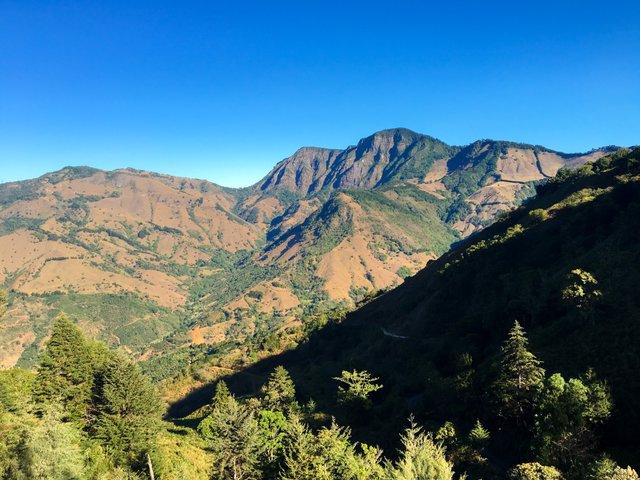
Now that we have dispelled some myths and learned about direct-trade and transparency, it’s time to talk about some of the things that affect the growth and the general quality of the coffee plant, coffea arabica.
Walking among the clouds isn’t just for daydreamers.
While the location of Costa Rica places it squarely in the world’s tropical zone, its climate varies greatly from the Caribbean coastline to the Pacific, and to the mountainous regions between them. Due to its proximity to the equator, Costa Rica doesn’t have the typical seasons to which people in non-tropical regions are accustomed. The variability in climate is mostly due to changes in elevation and there are only two main seasons for Costa Rica: dry and wet.
In the Tarrazú coffee growing region, the rainy season runs from around May to November. During these months, high temperatures are generally in the mid-70s and lows at night are typically in the upper 50s. Throughout the day, plenty of clouds will roll over the mountain-tops and bring a good amount of rain to the area. Even when it’s not raining, cloud forests will often envelop the vegetation and keep things fairly damp. The cloud forests are great for ensuring that the coffee plants do not overheat, but not so great for capturing beautiful photos of the mountain landscapes.
(On the road from the small town of Llano Bonito to the smaller town of Santa Juana.)
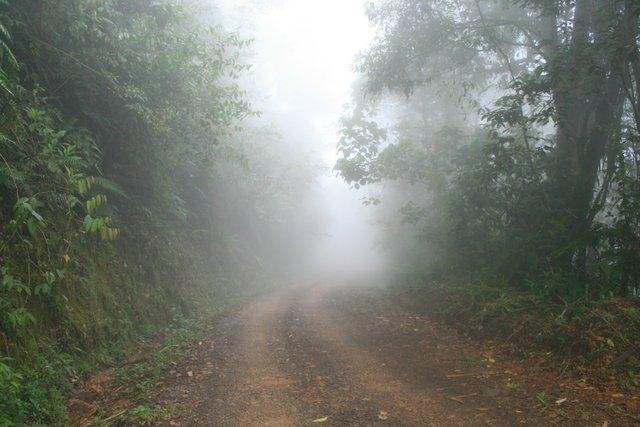
In the heart of the dry season, temperatures can routinely approach 80 degrees during the day and nights are slightly cooler, sometimes reaching the low-50s. If you don’t like excessive heat or cold – and don’t mind some cloudiness as a trade-off – then the mountains are an ideal place to be.
When it comes to coffee real estate, it’s all about soil, elevation, and shade.
One of the key factors for producing some of the best coffee in the world is Costa Rica’s rich volcanic soils. Not only does the soil here offer a variety of needed nutrients, but its acidic nature is a welcomed characteristic for the coffea arabica plant. Although the soil is rich, some excessive farming had occurred in Costa Rica since coffee-growing was introduced to the region in the late 1700s. Some areas have seen a depletion of nutrients and they are now carefully managed to ensure long-term sustainability. Over the past two decades, farmers have been working to improve soil and land management and have adopted better sustainability practices overall, which is still an ongoing process throughout the country.
While soil is a critical element in the coffee-growing equation, altitude plays a major role as well, especially given the tropical nature of Central America. If coffee plants are continually overheated, then production can dramatically decrease. In order to protect against an overheating issue, most of the farms are planted in the mountains, with Tarrazú being the most renowned region among them.
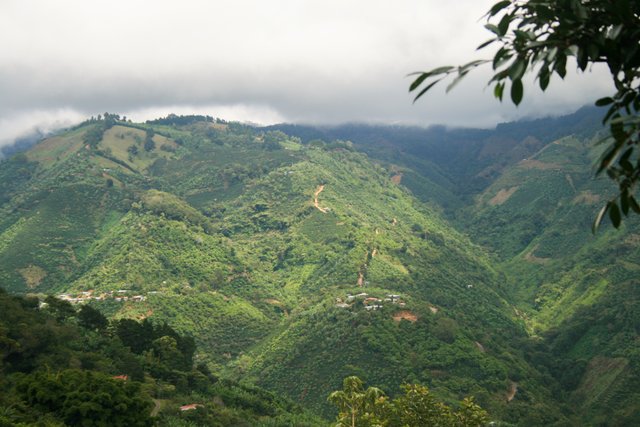
Most of the farmers that work with me have farms located in the 1500-2000 meter range – an ideal elevation for the arabica bean maturing process. The higher altitudes and cooler weather allow the coffee beans to mature more slowly during the growing season, which in turn makes the beans denser and gives them a much better overall quality and consistency.
To assist with temperature control, farmers will also plant different types of trees that are best suited for shading the coffee plants. As an evergreen, coffea arabica needs to be protected from too much direct sunlight – which can lead to further overheating. To protect against this, trees such as banana, avocado, and even mango are planted in the coffee farms to provide the necessary shade. As an added benefit, these trees also provide natural fertilizer to the soil as fruits fall from them and decay. The fruits even act as a natural pest control by enticing insects with sweet aromas and promises of deliciousness.
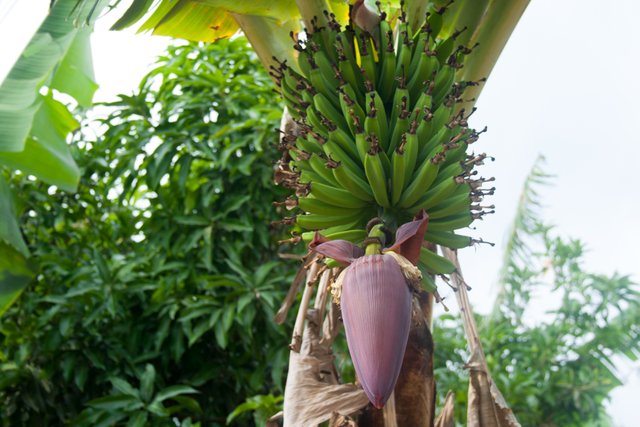
Try a little more varietal in your life.
There are two main varietals of coffea arabica throughout Llano Bonito and the larger Tarrazú region. The first is Caturra – a Brazilian mutation of the Bourbon varietal that adapts well to most environments. The other is Catuai – a Brazilian hybrid created from the Caturra plant, which is more resilient in climates where windy and/or rainy conditions are prevalent. Each of these varietals has a fairly high yield and Caturra plants produce better quality beans in higher altitudes. There is an upside limit to altitude, however. When the elevation exceeds 2000 meters, production and quality typically tends to decrease.
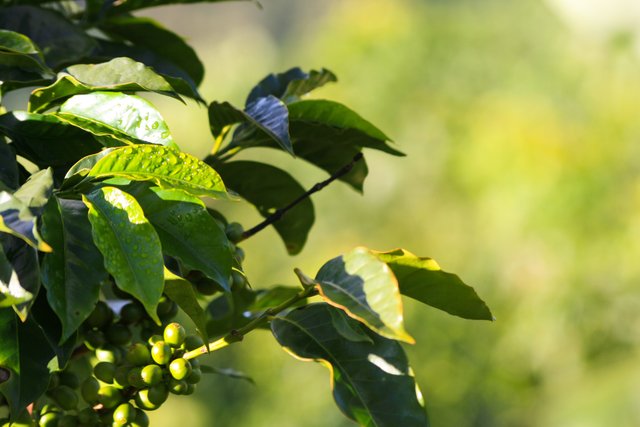
The farms that I have visited are usually on a relatively steep slope, which is to be expected (they are on the sides of mountains, after all). Nothing will give you a better appreciation for what the farmers do on a regular basis than by visiting these farms and taking the opportunity to climb the inclines and declines, weaving between the coffee and avocados. After a long walk around the farm, if you’re lucky like I usually am, the farmers will sit down with you and talk over a cup or two of amazing coffee. They are quite knowledgeable about their craft and they love to talk about it. Ask them a good question and they can go on for hours discussing the pros and cons of Caturra and Catuai, yields and harvesting, companion growing, and even the history of the coffee varietals in the region.
The best part is that I never get tired of hearing about any of it.
There are so many variables that go into producing an excellent cup of coffee, including some that I may never fully grasp myself without actually becoming a farmer (which could happen someday). Until then, I’ll continue with my education and relishing it all in the process – and sharing my knowledge with anyone willing to learn. For the next installment in this series, we’ll discuss more about the production cycle of coffee, including plant growth, bean maturity, and harvesting.
Previous installments in this series:
Make Your Coffee Great Again!
Make Your Coffee Great Again: The Source Rewards
Greetings! This article has been featured in Lost Content Digest, Issue #5. The author will receive a share of all SBD proceeds from the LCD issue.
Found it! Thanks!!
nom nom nom.
can't for the VR plugin with taste simulations... :-p
Do you know any developers who can take care of that ASAP?
Wow, that is really incredible. I really appreciate you taking the time to share this information, I never knew any of this!
You stated that areas have been depleted of nutrients, is the coffee plant a nutrient hog?
I wouldn't say that it is, especially where it's grown in Costa Rica - which is similar to where the plant originated. Being that the climates are somewhat related, it wouldn't require too much more to make up for any stresses put on it.
However, there are areas that had been affected by some depletion due to simply not understanding proper farming practices. I don't think it's too serious today, since they've been really staying on top of things with NPK fertilizers and foliage treatments when needed. If they had not started doing that, they'd be in a lot worse shape. Now they're all moving toward better sustainability practices, which includes the companion growing and natural fertilization from that, plus the NPK as needed. Things are definitely improving overall.
They just have to keep an eye on temperatures now. They've had a little warming over the past several years.